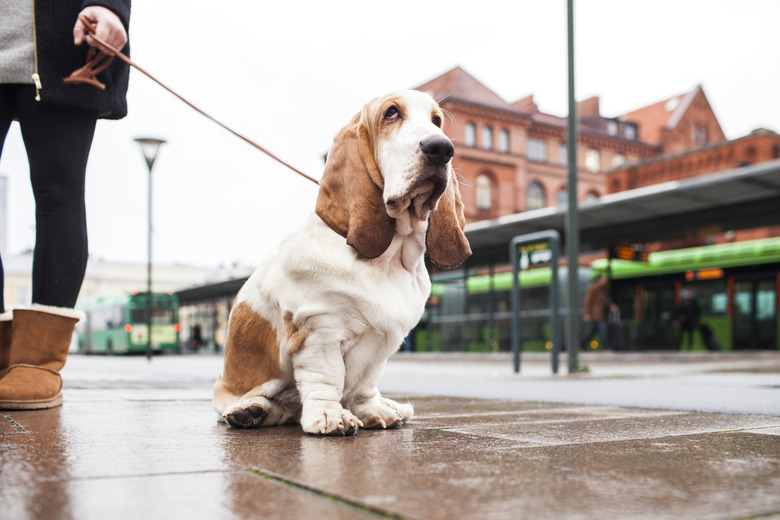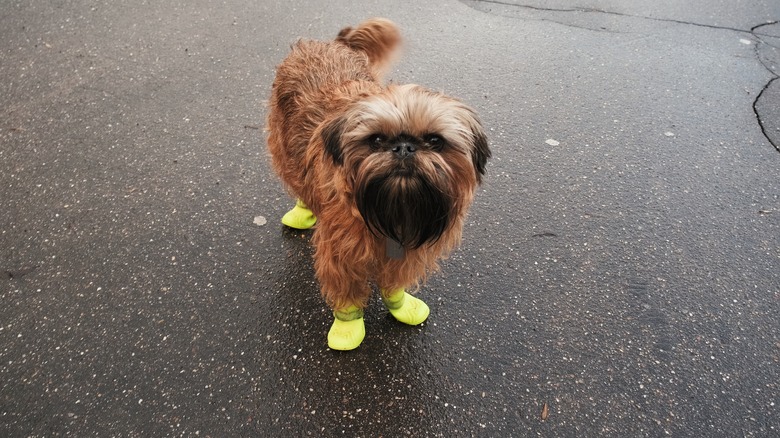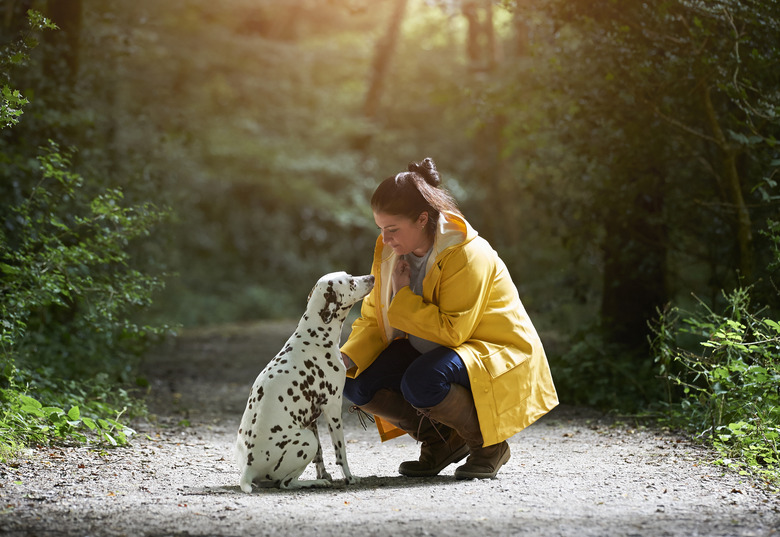Do All Dogs Like Walks?
Do you have a dog who doesn't like to go on walks? You aren't alone! There is a common stereotype that all dogs love walks and need to go on daily walks. In reality, a lot of dogs don't like going for walks or to the dog park. Walking your dog can be a great way to spend quality time together, and it can provide your dog with much-needed physical exercise and mental enrichment, but if your dog doesn't like to go for walks that's ok! Walking your dog isn't the only, or even necessarily, the best way to provide them with enrichment and exercise.
Change of behavior
Change of behavior
If you have a dog who has previously liked to walk and suddenly starts refusing to go out or seems less excited, this could be a sign of an underlying health condition. When you notice any new behavior problems or a change in your dog's activity, it's a good idea to schedule an appointment with your vet for a physical. Changes in behavior or physical activity can be a symptom of underlying medical conditions or an injury that you might not be aware of. A condition or injury could be causing the walks to be painful or uncomfortable for your dog.
Weather sensitivity
Weather sensitivity
Some dogs are more sensitive than others to changes in weather conditions and may only like to walk during certain seasons. Heavy coated dogs may struggle with walking during hot and humid weather. Older, short coated, and small dogs tend to be uncomfortable about going out for walks in cold weather. Stepping on ice can be sharp and can cut any dog's feet, regardless of size or age. In addition, salt and chemical deicers can make walking uncomfortable and painful for dogs to go on walks. If you notice that your dog doesn't like to walk when the weather gets colder, consider getting your dog a warm coat (especially for short coated dogs), and teaching your dog to become comfortable wearing boots that can help protect their sensitive paw pads.
Anxiety
Anxiety
Stress and anxiety can be a big reason why dogs don't want to walk. Some dogs are nervous or uncomfortable about needing to walk near busy roads, traffic noises, and the sights and sounds of construction equipment. Pay attention to your dog's body language when you try to go out on walks. If your dog is panting (and it's not hot), or their tail is tucked and their ears are pinned, it's very likely your dog is stressed about the walk. We want walks to be fun, but sometimes our dogs are stressed about factors in the environment you aren't even aware of or haven't noticed. For example, many dogs get nervous about the sound or sights of dogs barking or lunging from behind fences. Other dogs might be stressed by playgrounds full of children running, yelling, and playing. If your dog is anxious, any socialization or exercise benefits of walks are unlikely to be achieved.
Boredom
Boredom
Many dogs are happy to walk the same route every day. Some dogs crave new, enriching environments and may be bored by taking the same neighborhood walk day after day. These dogs who get bored easily may start to be less enthusiastic about going out or may even try to avoid going for walks. To help dogs that tend to get bored, you can change up your regular walks by taking different walking routes in your neighborhood. If possible, try to drive somewhere new to give your dog new sights and smells. If you can't change where you walk, you can help your dog be less bored by adding enrichment games into your walk routine. Practice dog training games like tricks while you wait for a light to change, incorporate parkour or urban agility skills into your walks to make them more interesting and exciting for your dog.
Avoiding environmental stressors
Avoiding environmental stressors
If you have a dog who is anxious about being out on a walk, it can be helpful to vary the times that you bring your dog outside. Try walking earlier in the morning, or late in the evening. The goal is to look for times when your neighborhood is going to be quieter and less stressful for your sensitive dog. You can also try to drive to other locations like parks or natural areas that won't have the environmental stressors that your dog finds stressful or upsetting.
Walk alternatives
Walk alternatives
If you have a dog who for whatever reason doesn't enjoy walks, you don't have to take them out walking. All dogs should get physical and mental enrichment in their day, but that doesn't have to come in the form of a walk. Especially if it's not something your dog enjoys. Experiment with different enrichment activities and games that you can play with your dog inside your house or in your yard if you have one. Teaching your dog new skills and tricks are also a great way to give your walk hating dog mental and physical exercise at home.


